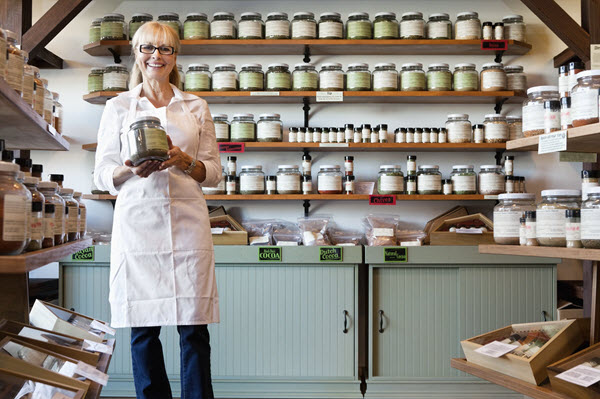
“Who is it that’s unhappy? The one who finds fault.” ~Anonymous
If you are anything like me you yearn to know in your bones that you are showing up in your primary relationship as your best self. You want to be loving, kind, and supportive (and to reap the gifts those qualities sow in your love life). But certain habits of interaction get in the way, making you feel inept and ashamed.
Like many of us, I grew up in a family that was steeped in criticism and blame. Though I rebelled against this behavior intellectually, it found its way deep into me.
When the first blush of love-bliss wore off in my more serious relationships, blame and criticism would rear their ugly heads, leaving me guilt ridden and very disappointed in myself. It always created distance in my relationships.
This habit is the top reason relationships fall apart. Not only does it feel terrible to the one being criticized, it also destroys the perpetrator’s own sense of confidence in their worthiness and integrity, further shutting down the free flow of love.
Looking back at my first marriage, I see that this ingrained and destructive habit was at the root of our love’s erosion. Because I tended to use a subtle form of blame and criticism that were harder to label as such (I mostly thought I was asking for things, when actually I was belittling and condemning), it became pervasive. Over time, like weeds left to grow rampant, it overtook our joy entirely.
Criticism and blame can be blatant or subtle. The obvious expressions are often in the actual words we choose. But, as I learned the hard way, it’s the subtler forms of blame and criticism that can do the most damage because they are harder to spot.
Since much of our communication is non-verbal (up to 93 percent!), it makes sense to take a good look at if and how we are imparting blame and criticism without words.
Some of these subtle ways include:
~Tone of voice (“Can you please stop…” said with a tone that drips blame or implies stupidity.)
~Sounds (“Ugh!” meaning, “There you go again.”)
~Body language (rolling your eyes, giving them cold looks… I once stuck out my tongue at my partner in a heated moment.)
~Asking someone to “do better” can be an insidious form of criticism, if not done well. This was my main way of using it.
In my current partnership I vowed to do things very differently. I let him be him, no complaints. We enjoyed years of authentic, kind, tolerant, and loving ways of relating to each other. I felt proud and happy to have seemingly overcome that bad habit.
And then we hit a rough patch. Over the course of one stressful year we had a baby, with all the lack of sleep and physical and emotional adjustments that brings, as well as built a house (a huge and challenging job…as the saying goes: “build a house, lose a spouse”), while also raising my older boys and maintaining the rest of our lives.
The strain of this time put a lot of pressure on me, and I found my old bad habit of blaming and criticizing really hard to suppress, as if it had a life of its own.
I started subtly putting him down, sometimes saying things like, “You never listen!” or once, “You are such a teenager!” because he stayed out later than he said he would. But mostly it showed up in my tone of voice, judgmental and intolerant. This would set him off and send us downhill fast.
This went on for a few months. I felt terrible about it, yet didn’t know how to stop. The effect was that he became more on guard, not as open and warm as usual. And I started berating myself for my behavior, which cut me off from being able to feel and express my warmth and love.
It also made me afraid I might destroy this incredibly good thing we had—one of the most cherished things in my life.
It was time to regroup. So I rested up and rebalanced a bit. It was from this more centered place that I had the capacity to take a really hard look at where I was going wrong.
The powerful insights I discovered have all but completely eliminated that harmful way of relating. Here they are for you, with tips on how to live them so that you can keep, revive, and grow that beautiful thing that is the love in your life.
1. Build an inner eco-system of self-compassion.
Don’t make the mistake of re-directing any blame back at yourself. Instead, try kindness and curiosity.
Start by understanding that blame and criticism are misguided attempts at protecting yourself and, ironically, at creating a better relationship. At the heart of it is a longing to feel good. Although the goal is virtuous, the method is not. Just understanding this invokes a sense of self-compassion.
Then, consciously cultivate an attitude of kindness toward yourself.
The next time you are experiencing the fallout emotions of having blamed or criticized your partner, simply feel what you feel. Be there with yourself the way you would with a child who is having a temper tantrum—compassionately.
Put your hand on your own heart (or cheek or arm) and say to yourself “be safe, be well, be at ease, my dear.” I like to call myself “my love, or my sweet” when I do this.
Experiment and see what feels most resonant for you. As feel-good hormones are released through this simple action, you start to feel more safe and at ease inside yourself. This raises your ability to be your authentically loving self in your relationship.
2. Own it.
Taking responsibility for your unskillful ways is essential for wholeheartedly ending them.
Whether in the heat of the moment or later, you must be able to say: “Oops, my bad—again!” Admitting your blunder to yourself (compassionately) and to your significant other is part of taking responsibility for your actions.
Doing so will help soften your partner’s barbed defenses and start to ease any tension. An authentic “I’m sorry” can work wonders, as a starting point.
Own that when you are complaining or blaming you usually want something but are simply sharing that ineffectively. Instead, figure out what you want. Then be brave enough to ask for it—when you are ready to use a calm kind tone.
3. Notice that fear is the underbelly of blame and criticism.
Below every angry expression of blame or criticism is fear. Fear of discomfort, pain, or otherwise feeling bad. Fear hijacks our brain and makes even our allies look like enemies, leaving behind the rational, kind, and loving parts of our nature.
A small example would be if I were whining to my man about how he never sticks to his agreements about our division of house chores. Underneath that blaming expression is the fear of feeling stressed out and exhausted by having to squeeze more chores into my already full schedule.
The key here is being deeply and bravely honest with yourself. When you find yourself about to criticize or blame someone, or having just done so, ask yourself, “What am I afraid of here?”
Then ask, “What’s underneath that?” You might find that sadness lives there. Or even shame. Either way, this will help shift you out of anger and into curiosity, compassion, and a sense of integrity as you draw closer to your genuine truth. If you can uncover that truth just once, it will unravel the grip of the habit and make it easier to stop the next time it tries to grab you.
4. Enlist your body.
When the mood of blame and criticism hovers close, smothering you from the inside out, move your body. Shift your position, go for a walk or, my favorite, dance.
Instead of closing in on yourself, as fear and anger cause us to do, allow movement to physically open your posture, shake out the irritation, express the frustration, and soften your muscles.
Or maybe your need is to rest, shifting the body into a softer easeful state. This will melt your fear brain, connect you to your essence and get you back to acting from your natural kind goodness.
5. Redirect to appreciation.
Ask yourself a really good positivity-boosting question to direct your attention toward appreciation. As a self-protective measure, our brains are wired to look for the negative. To counteract this bias in our relationships, we must consciously look for what is positive.
So ask yourself, “What is wonderful to me about him/her?” If at first answers come slowly, stick with it and the floodgates will open.
When I do this I start to see many things that I adore about my man, and it fills me with love, replacing anger or fear. Nothing is too little: his cheekbones, the way he plays with our sons, the unique sound of his breathing as he shifts into sleep…
Sharing these appreciations with your partner through words or gestures encourages a flourishing of warmth and affection.
—
Now that I am through those few months of stress when I was once again ensnared by the temptation to criticize and blame, I am grateful for that time because it motivated me to dig out the roots of that harmful habit.
I am now deeply confident in my ability to show up as my best, most loving self in my partnership (which helps my man do the same).
These days, if my love life were a garden, it would be the most lush, colorful, and medicinal place, with an occasional root leftover from that giant old criticism tree that I pulled up not so long ago.
When those roots occasionally grow a shoot, I notice it and gently but firmly pull it up using the techniques I discovered. Then I turn back to adoring my magical garden, allowing it to nourish my whole life. And you can do this too.
Couple painting here

Hannah Brooks is a Mind Body Relationship Coach who helps deep-feeling and easily rattled women create genuine connection, peace, and wholehearted satisfaction in their love lives. For further tips and guidance check our her free toolkit, 3 Essential Steps to a More Loving Relationship, Even When You Feel Irritable, Resentful, or Disconnected. Grab it free here and find her at lifeisworthloving.com.
Get in the conversation! Click here to leave a comment on the site.
The post How to Prevent Blame and Criticism from Destroying Your Relationship appeared first on Tiny Buddha.
from
https://tinybuddha.com/blog/prevent-blame-criticism-destroying-relationship/





























